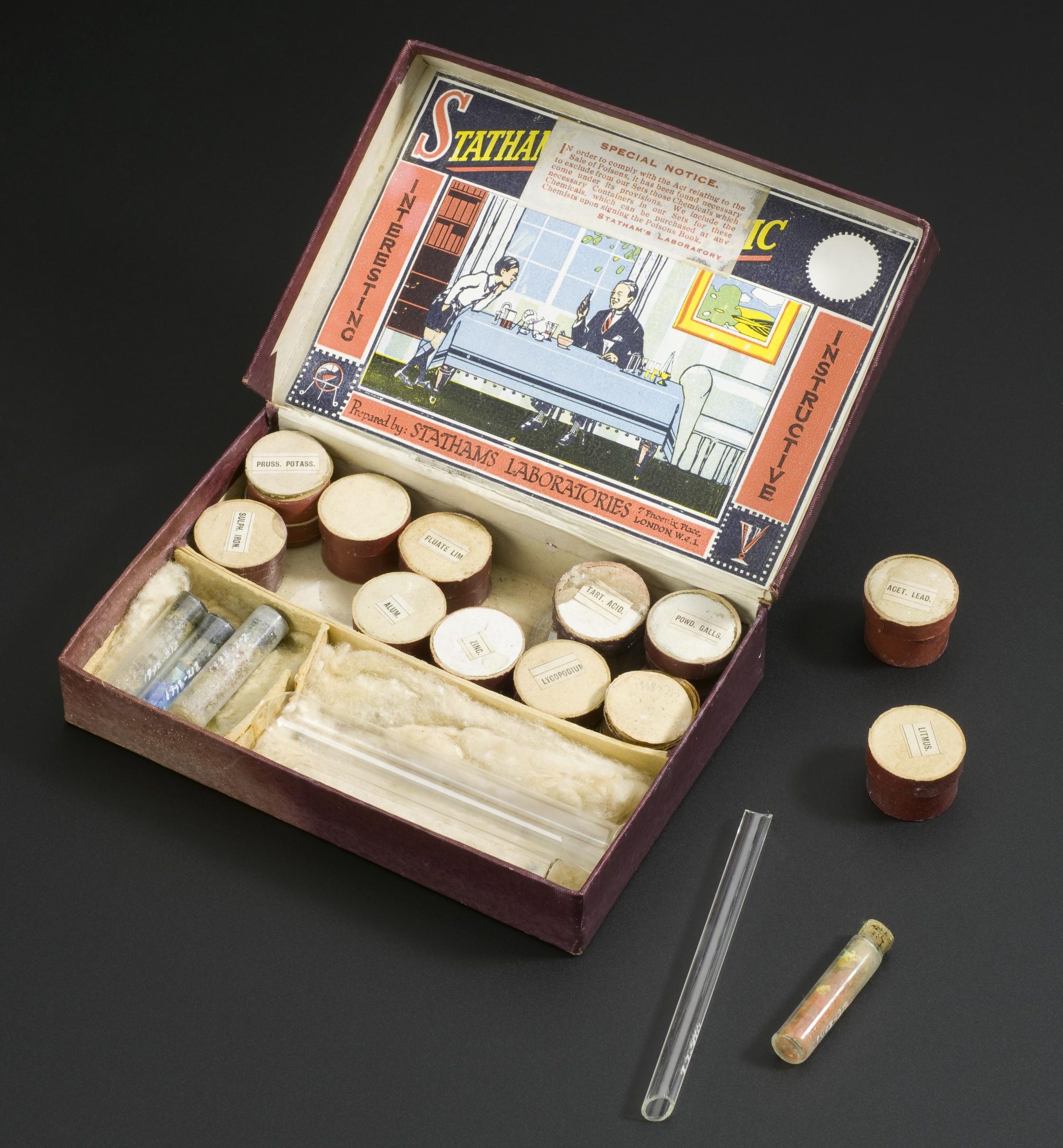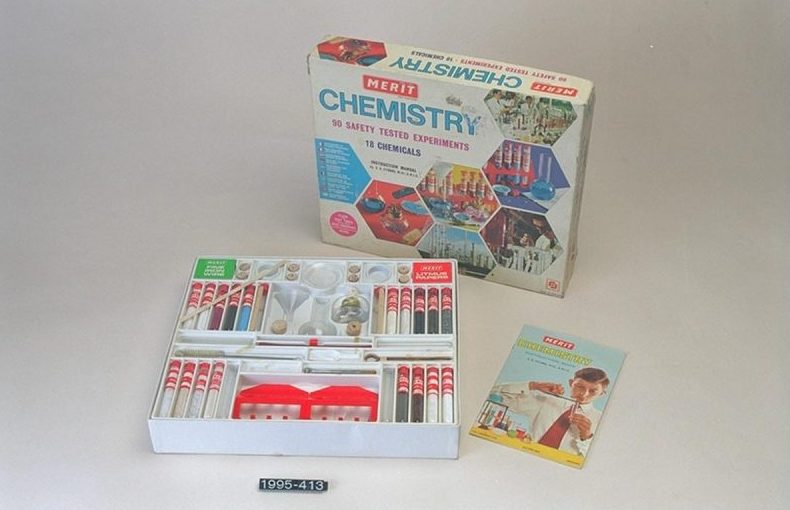Last Valentine’s Day I was given a ‘kitchen chemistry’ set (romantic, eh!). Obviously the first experiment we tried was the ‘volcano’, in which a pink foaming eruption is brought about by adding bicarbonate of soda and vinegar to a food-coloured solution of water and flour.
The set contained safety googles, plastic beakers and a mat, but the idea was that the chemicals would be sorted from everyday products you might have in the kitchen.
This is a far cry, as many have bemoaned, from its chemistry set ancestors, where hazardous chemicals and potential explosions were all part of the joy of owning a home chemistry set. The Age of Health and Safety and Litigation is usually blamed for its demise.
How did the chemistry set enter the home as a recreational pastime?
The chemistry set partly originates from the portable laboratories owned by natural philosophers and physicians in the late 18th century. The Science Museum has a fine example of one of these from the early 20th-century, owned by the Scottish doctor and neurologist, Alexander Bruce.
Another root was the Enlightenment tradition of ‘rational amusements’ and ‘natural magic’. In the Victorian period, chemical ‘tricks’ and ‘magic’ became a sub-genre of conjuring, where handbooks aimed at children would contain experiments calling for sourcing chemicals from local suppliers.
In the early 20th century, Victorian cabinets of chemical amusements were recast as toys, but the tradition of ‘magic’ remained.

This set, ‘Stathams Chemical Magic’, contains a notice on the box lid informing its user that some chemicals have been excluded according to the Sale of Poisons Act (1933). But not all was lost for the young risk-seeking chemist, as these ‘chemicals could be purchased from any chemists upon signing the Poisons Book’.
Statham Laboratories was a long-running manufacturer of chemistry sets. The firm was founded in 1835 as ‘William Edward Statham and Son’, druggist to the Royal Household. They introduced their first set in 1839 called ‘Statham’s Students’ Chemical Laboratory’, which remained on sale until 1900.
The Science Museum has one dating from around the 1870s, complete with (now carefully managed) hazardous substances.

Chemistry sets boomed in the middle decades of the twentieth century. They were almost invariably marketed at boys, reflecting the gender politics of science at the time.
But that’s not to say girls didn’t encounter them at all. Dorothy Hodgkin was given one by a family friend, Sudan’s government chemist A. F. Joseph, at the age of 10, which would form the basis of her childhood laboratory in her home’s attic.
Rosalind Henley, a lesser known chemist, set-up her childhood set in the stables of her home: ‘The inhabitants [horses?] … were not only alarmed by the smells … I remember at least one explosion that came quite close to a disaster’.
Basements, attics, garages and sheds were the spaces where home chemistry took place.
Many Nobel laureates cite chemistry sets as the catalyst for their careers. It has become such a trope of scientific biography that chemists feel the need to admit if they haven’t had such an experience, as Sally Horrocks has found working on the British Library’s voices of science project.
The 1970s witnessed a decline in the chemistry set, in the wake of increasing environmental concerns around the chemical industry and new legislation in health and safety.
New Scientist published a damning review of two sets in 1976, which included one we have in the collection: Merit’s Chemistry’s Set 2.

It is ‘almost unbelievably old fashioned’, they wrote. ‘The cover picture shows a schoolboy with clothes and hair style of 1935, and without safety spectacles, laboratory coat or even apron’.
As well as lacking in safety instructions, the set’s handbook was judged to be inadequate in terms of education and also ‘a bore’.
In recent years there has been somewhat of a re-emergence of chemistry sets, with some of the more high-end examples including glassware and actual chemicals. For those budding Heston Blumenthal children who want to go down a molecular gastronomy route, there are even sets for them too, bringing a whole new meaning to ‘kitchen chemistry’.
